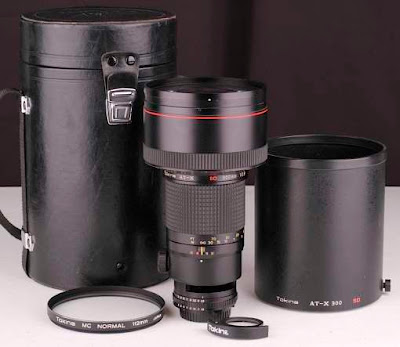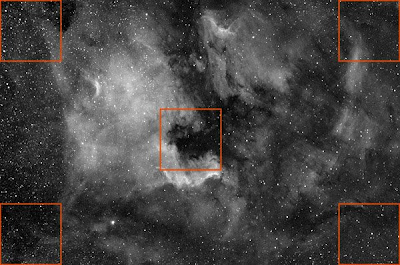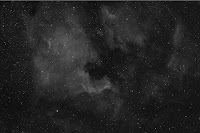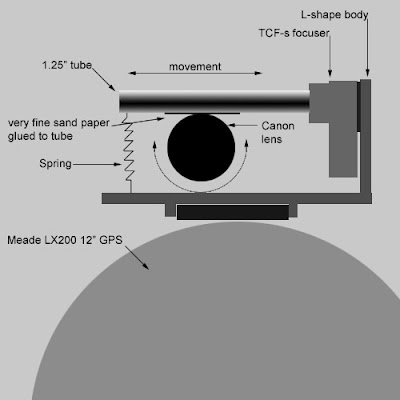COPYRIGHT, PLEASE NOTE
Wednesday, January 7, 2009
A New Observatory!
 Telescope on the new pier
Telescope on the new pier
 Canon 200mm f1.8 monster lens on the telescope.
Canon 200mm f1.8 monster lens on the telescope.
 The pier before painting and bolting down.
Leveling is done by the four bolt in the concrete.
The pier before painting and bolting down.
Leveling is done by the four bolt in the concrete. Modification to QHY9 camera



QHY9 8,6mb cooled astro camera

Main Features Total pixel : 3448*2574 (8.9mega pixel) Active pixels: 3358*2536 (8.6mega pixel) Pixel Size: 5.4um*5.4um FullWell: 25.5Ke- Imager Size : 19.7*15.04mm 4/3inch Readout noise: TBD(Appox 10e maybe) Preview Speed: 3Mpixel/s (3sec download time) Download Speed: 1Mpixel/s (9sec download time) Peak QE: 56% @540nm 48%@Ha Microlensing on chip ABG: 1000X 16bit ADC with CDS and Preamp USB2.0 High Speed interface Build in 32MBytes SDRAM buffer Support Binning: No Bin, 2*2,3*3,4*4 Communication port to QHY color wheel Improved 2-Stage TEC cooling -50 from ambinet Improved Heat Sink For KODAK CCD Build in Temp sensor and 16bit high presion ADC DC103 DC adapter & TEC Controller, Regulated Build in Mechanical shutter for Full Frame CCD Fully Airproof with Two 4.0mm Air Socket Weight: 510g Deep Cooling DC103 DC adapter & TEC controller Single voltage Input: +12V Output +-15V +5V to CCD PWM TEC controller: 0V-12V to TEC Single Cable connection with QHY2PRO Accquire Temp sensor information For more informations please visit discuss forum http://qhyccd.com/ccdbbs/index.php?topic=989.0
-
Some quick and dirty first test images.
Note! NO DARKS are used, only flats and BIAS, 7nm Baader H-alpha filter.
Images are scaled down 50%.
 Rosette Nebula. 2 x 10 min with Canon 200mm EF f1.8L lens and QHY9. NO Darks
Rosette Nebula. 2 x 10 min with Canon 200mm EF f1.8L lens and QHY9. NO Darks
 Extremely dim supernova remnant in Taurus.
Only 5 x 10min Canon 200mm EF f1.8L lens and QHY9, NO Darks
Extremely dim supernova remnant in Taurus.
Only 5 x 10min Canon 200mm EF f1.8L lens and QHY9, NO Darks
Canon 200mm f1.8 lens

UPDATE
Astronomical images shot with this lens can be seen here:
http://www.astroanarchy.blogspot.com/search/label/Canon%20200mm%20f1.8%20images
-
removing the original Canon bajonet
-
cutting off all the wires between the lens and the bajonet
-
soldering an extencion cord between the lens and the bajonet
-
attachment of the M42 ,75mm thread to the lens end

Original wires are cutted and extencions soldered in.
 Canon bajonet with cutted wires.
Canon bajonet with cutted wires.
 Extencion cords are soldered to the bajonet.
Extencion cords are soldered to the bajonet.
 M42 ,75mm thread is attached to lens end.
M42 ,75mm thread is attached to lens end.
Sunday, September 14, 2008
New equipmets and some development work.

New flat "box" with EL-sheet.

In action
New Lens for astro imaging


 Tokina AT-X 300 f2.8 is a big and heavy lens.
Tokina AT-X 300 f2.8 is a big and heavy lens.



 This is a single 900s H-alpha filtered, flat and bias calibrated frame.
This is a single 900s H-alpha filtered, flat and bias calibrated frame.Friday, March 21, 2008
Focusing & imaging system for the camera lens
 Focusing system from top.
Focusing system from top.

image about whole imaging system
 The Business end of the lens
The Business end of the lens
Accurate focusing is needed doe the very fast lens. At f2.8 the sharp focus zone is about 20/1000 mm! Focusing by hand is a pure Lottery. I have TCF-s focuser and its temperature compensated, so thereis no need to refocus every time when temperature drops.
The focusing system has been build from the scrap metal and some parts found from
the drawer.
Its very easy to move the focuser back and forth between main scope
and the lens.
There is a right size can lid bolted down to a L-shape body.
Focuser is then atattched to the lid.
In a focuser, there is a brass tube. This tube goes back and forth when focuser moves.
Its then rotate the focuser ring of the camera lens. There is peace of fine sandpaper glued
to the tube to prevent slipery, tube has allso a spring load for the same purpose.
I have used TCF-s focuser but it can be any focuser, even manual one!
It will make focusing easier and less random.
The whole project took about three hours of time and cost 50c (I had to buy
some bolts)
The whole assembly is then attached to the dowetail rail at top of the LX200 scope.
This is a second version.
The firs version was made by blywood, but I made it again with metal doe flexsure problems.
 Shematic
Shematic
Thursday, February 14, 2008
First light, Canon FD 200mm f2.8 lens
 I added some color, but there was problem with camera orientation, so image is clipped.
I added some color, but there was problem with camera orientation, so image is clipped.
Color data: only 3x600s with UHC-s filter

I shoot California nebula as well. Elevation was very low at the end of the exposures,
only about 28 degrees.
H-alpha 4x900s, same setup.
Color version:
3x600s trough UHC-filter added.
 Over all, I'm veryhappy with this lens. This is very first time to me use camera lens
Over all, I'm veryhappy with this lens. This is very first time to me use camera lens
for astro photography.
I was expecting severe distortion in the image edges, there is none!
I was expecting severe color aberration, there is none!!!
This lens was unexpencive, doe the old FD model, about 120€.
 Here is the link for moreinformation:
http://www.mir.com.my/rb/photography/companies/canon/fdresources/fdlenses/200mm.htm
All the images are shooted with full f2.8 aperature.
Here is the link for moreinformation:
http://www.mir.com.my/rb/photography/companies/canon/fdresources/fdlenses/200mm.htm
All the images are shooted with full f2.8 aperature.
The front lens aperature is 72mm.
FOCUSING Fast lenses are very difficult to focus manually, it's pure luck to reach sharp focus. 200mm f2.8 lens has about 20 microns sharp focus area! I build a simple autofocuser to my lens by using TCF-s temperature compensating focuser. I'll send real pictures about that later. Here is a picture about principle. This system solves allso problems with focus temperature shift!
TCF-s focuser is easy to move back to the main telescope at anytime.
I was able to use FocusMax with the lens and reach sharp focus in 30 seconds.
This system solves allso problems with focus temperature shift!
TCF-s focuser is easy to move back to the main telescope at anytime.
I was able to use FocusMax with the lens and reach sharp focus in 30 seconds.
Monday, December 31, 2007
SXV-AO, Active Optics sytem first light
 Comparison image of AO and no AO system.
Comparison image of AO and no AO system.  Image of the AO-unit, from the telescope side
Image of the AO-unit, from the telescope side
 Assembly
http://www.starlight-xpress.co.uk/SXV-AO.htm
Assembly
http://www.starlight-xpress.co.uk/SXV-AO.htm 






















